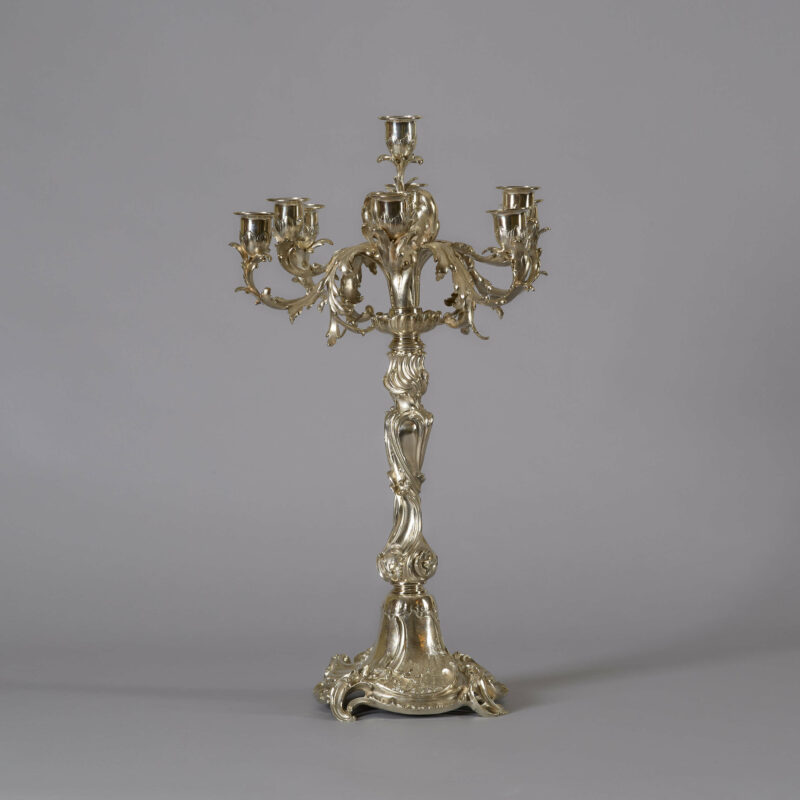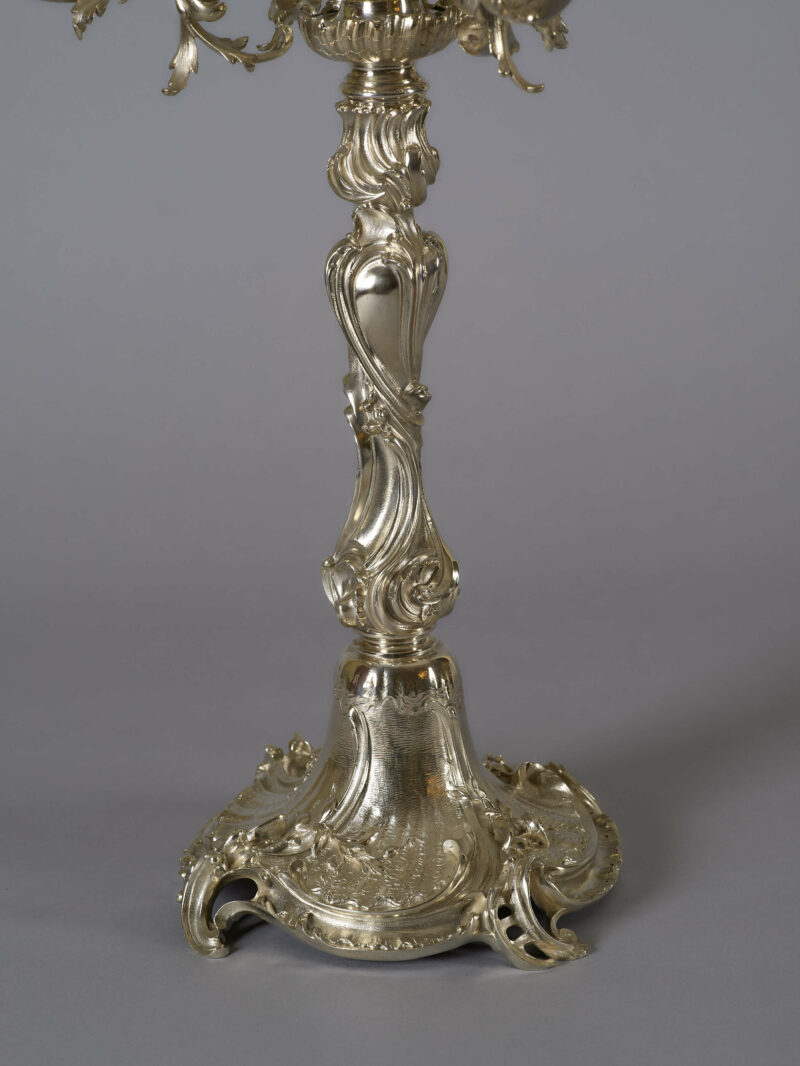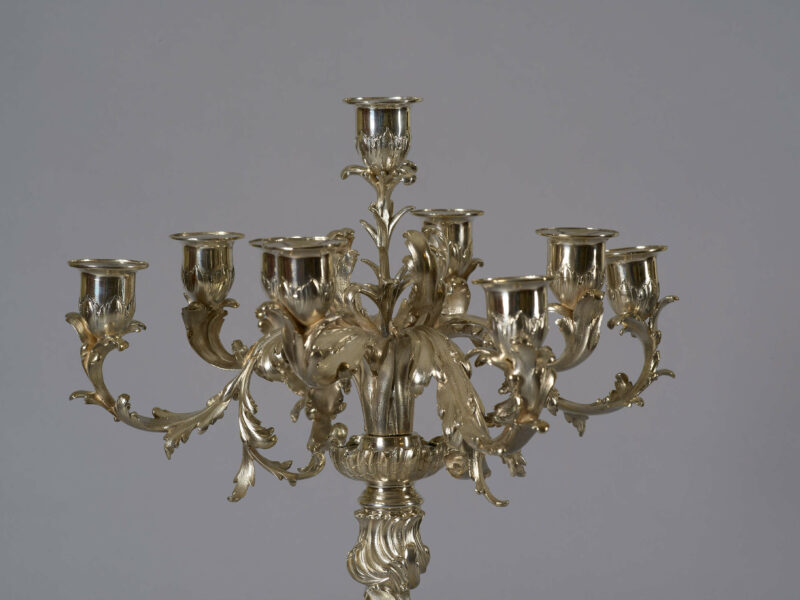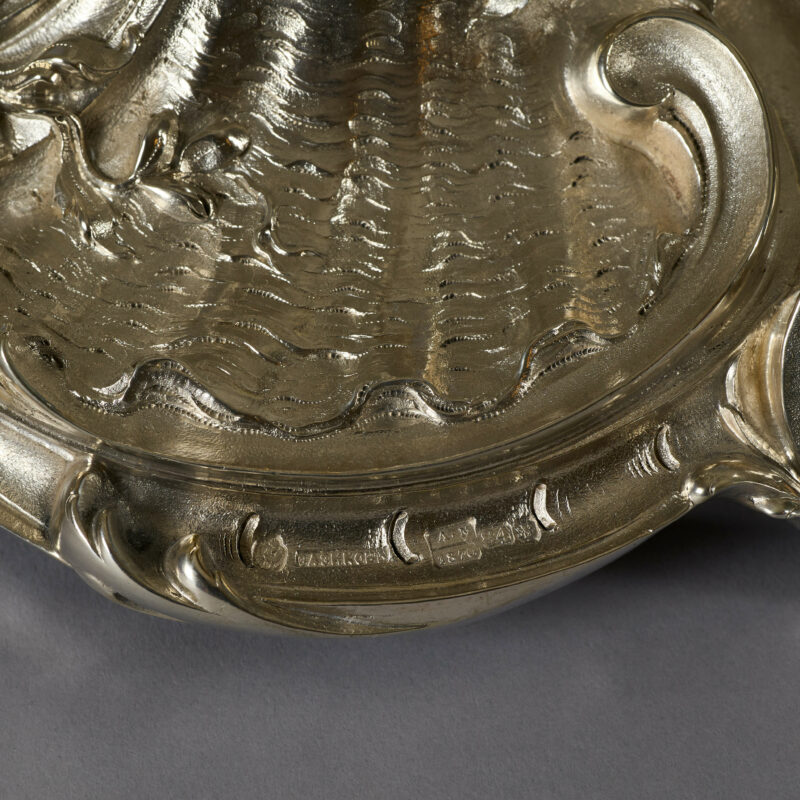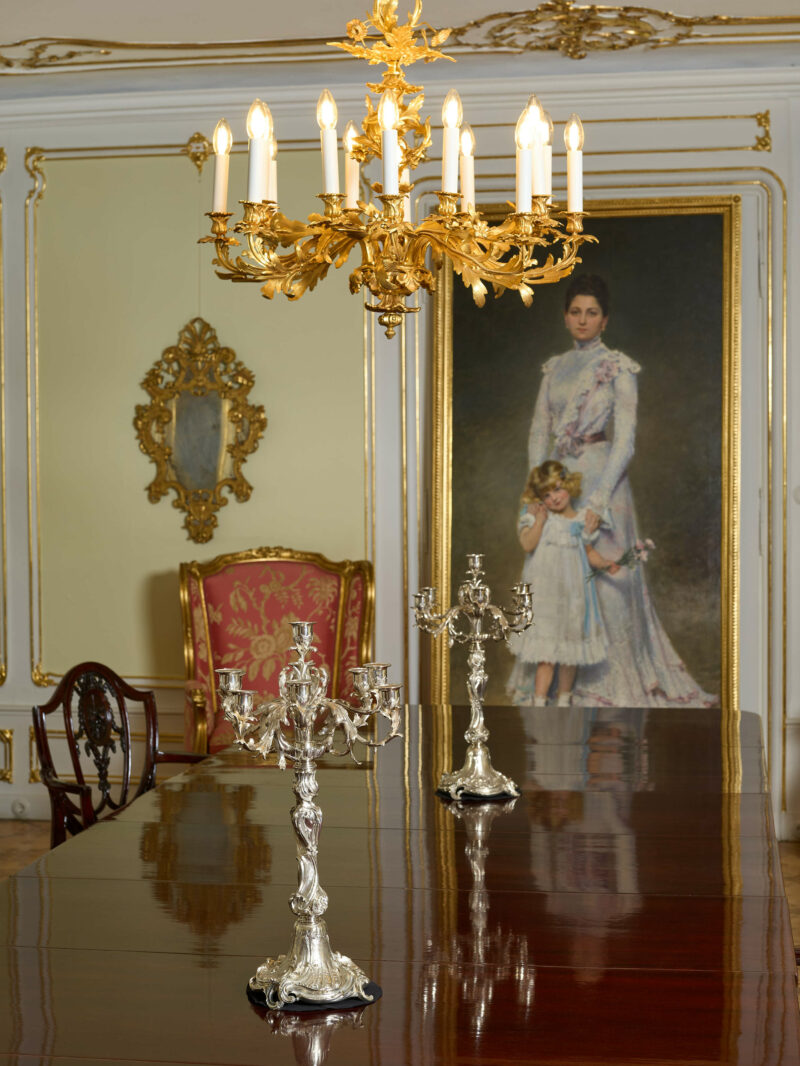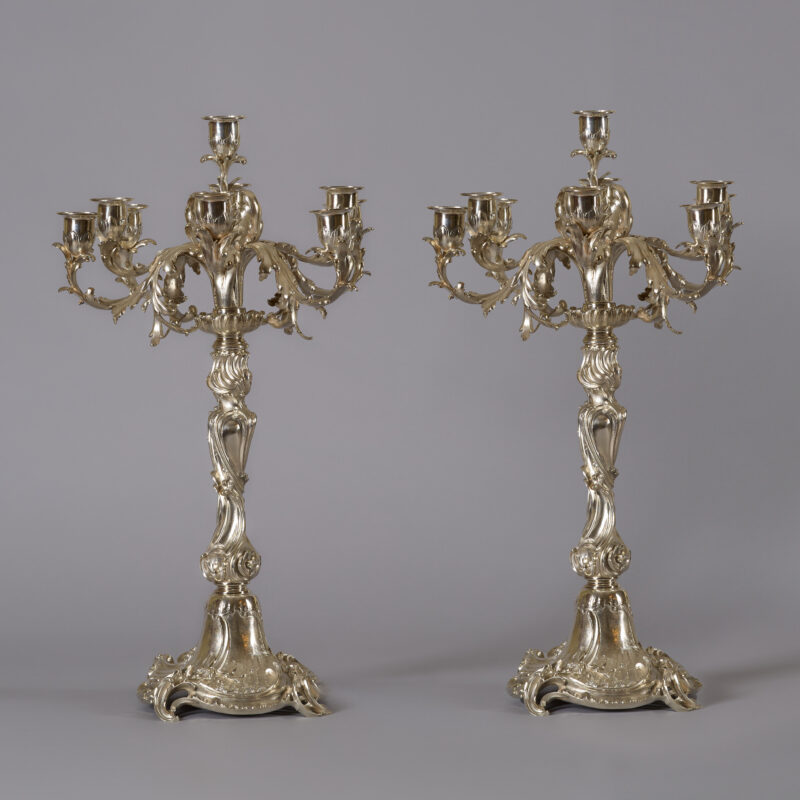
Magnificent Silver Candelabra in heavy design
Masterful work by the court goldsmith of Tsar Pavel Fyodorovich Sazikov. Assayer: Alexander Mitin (1842 — 1877).
Opulent work by the court goldsmith of the time of Alexander III, exquisitely chiseled, in the form of volutes and rocaille decoration, with gracefully curved arms adorned with floral motifs. The nine arms of the chandelier are fitted with very fine vase sockets in a clear form, with only the lower part adorned with chiseled petals.
Chandeliers of this quality and execution, from a house like Sazikov, were exclusively reserved for the aristocracy, bankers, or very wealthy industrialist families of the time. A prime example of the outstanding quality and skill of the silversmiths of Sazikov was the commissioned work for Tsar Nicholas I, which Sazikov produced in 1848. The opulent silver tea and coffee service in the Russian style was commissioned by Tsar Nicholas I as a gift for his son, Crown Prince Konstantin Nikolaevich, the younger brother of Alexander II, on the occasion of his wedding. This was also the first wedding service commissioned at the court supplier Sazikov.
Signature: Sazikov, St. Petersburg city mark, assay master’s mark of Alexander Mitin 1870.
These beautifully crafted silver chandeliers, in a heavy design from one of the most significant Russian jewelry and goldsmith dynasties, are a wonderful example of the incredible craftsmanship and masterful skill of the court supplier to the Tsar’s court.
PAVEL FEDOROVICH SAZIKOV
Sazikov, a jewelry, gold, and silversmith dynasty:
The Sazikov goldsmithing manufacture is one of the oldest in Russia and was founded in Moscow in 1793 by the jeweler, goldsmith, and chaser Pavel Fedorovich Sazikov. The jeweler and goldsmith Sazikov was awarded the title of “Court Jeweler and Goldsmith of the Tsar” Nicolas I in 1837.
Ignatij Sazikov, the son of the company’s founder, born in 1793 and died in Moscow in 1868, opened a branch in St. Petersburg in 1842. Sazikov participated in many world exhibitions and exhibitions in Russia, where he received medals in the years 1835, 1849, 1853, 1861, and 1865.
In 1851, Sazikov participated for the first time in the World Exhibition in London and won a gold medal, and again in 1862. Unlike the Bolin company, which was also successful there, Ignatij Sasikov represented a genuinely “Russian style”. The workshop of the silversmith was initially located only in Moscow and produced all kinds of silver objects. At that time, various objects were manufactured, from everyday use to artistic objects for the Tsar’s court or significant exhibitions.
The most famous descendant of the dynasty was Ignatij Sasikov, the son of the company’s founder, who is considered one of the most important Russian silversmiths and jewelers and was called the Russian Benvenuto Cellini because of his extraordinary talent. Sazikov also had the idea to stylistically incorporate old Russian forms and peasant motifs into his jewelry art, which found great resonance with his clientele from the second half of the 19th century. Sazikov traveled extensively and brought the latest machines and techniques to Moscow and St. Petersburg, such as a guilloché machine from France in 1843. He also revolutionized and combined many old techniques with modern ones, such as enamel or niello technique.
Around 1850, a school was also located on the company premises, where about 80 students were trained as gold and silversmiths. Ignacy Sasikow employed and worked with renowned artists and sculptors to design new models. Thus, his manufacture produced a silver service with Byzantine decorations in 1848 for the wedding of Grand Duke Konstantin Nikolaevich, the younger brother of Alexander II, designed by Fyodor Solntsev — an artist and archaeologist famous for his special familiarity with Old Russian art.
Jewgeni Lansere contributed to the miniature sculpture of a troika. This service is now in the Fabergé Museum. After Ignacy Sazikow’s death in 1868, his sons Pavel and Sergei took over the company and ran the business and workshop of the manufacture until 1887, after which they were taken over by Ivan Chlebnikow.
Lit: Adam Szymański: Sazikow. Business. In: A. Szymański (ed.): Goldsmiths of the Romanov court. Berlin-Opole: Metropolisart, 2011, pp. 128 – 129.Adam Szymański: History, style and works of the Russian goldsmith company Sazikow. In: P. Iwanow (ed.): Sketches on Russian goldsmithing. From the mid-19th to the beginning of the 20th century. Warsaw: Metropolisart, 2010, pp. 5 – 39.
Further Reference Links, please click HERE, and HERE (see also reference image below at the bottom).
